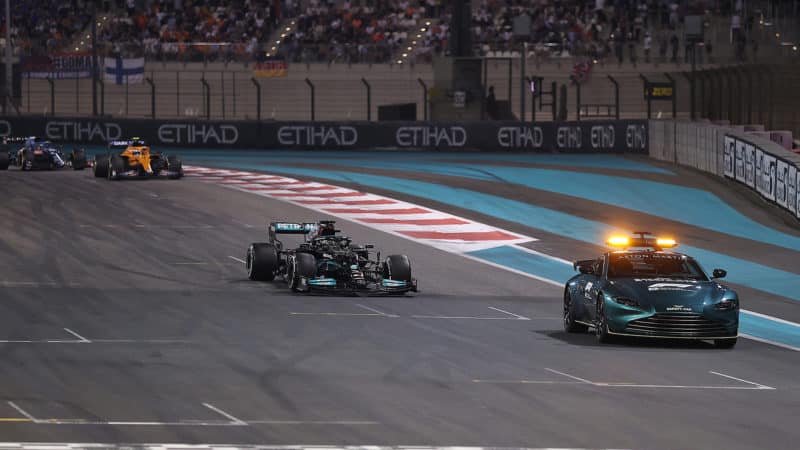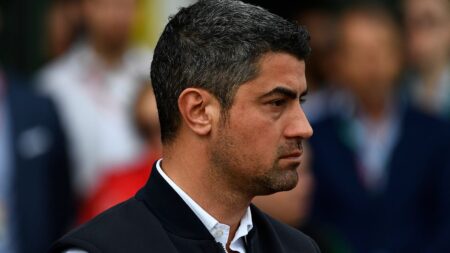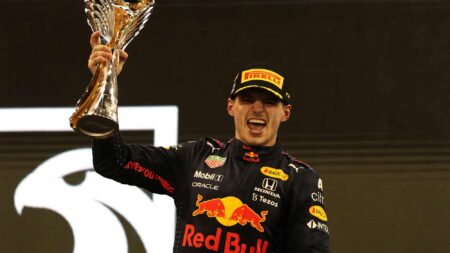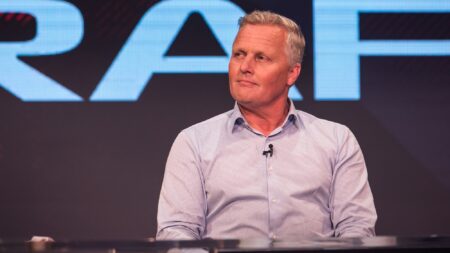His error was to allow only the lapped cars between leader Hamilton and second-placed Verstappen to unlap themselves, then to bring the safety car in at the end of the same lap. It delivered a thrilling finale but also diverted from the procedure set out in article 48.12 of F1’s sporting regulations.
This article lists the sequence of events that lead up to a race restart after a safety car, and states that “any cars that have been lapped by the leader will be required to pass the cars on the lead lap and the safety car” — with our emphasis.
It goes on to say that the safety car would normally circulate for a full lap, once all unlapped cars have passed it, stating: “Once the last lapped car has passed the leader the safety car will return to the pits at the end of the following lap.”
Abu Dhabi safety car controversy: sequence of events
Lewis Hamilton looked to be on course for victory and an eighth world championship in Abu Dhabi after what amounted to a dominant display for the 2021 season. The Mercedes driver had been able to maintain a comfortable lead over Verstappen for most of the race and the Dutchman looked powerless to stop him, even though he had fresher tyres.
Then, with six laps to go, Nicholas Latifi lost control and hit the barrier at the exit of Turn 14, bringing out a safety car as the wreckage was removed. A brake fire slowed the recovery and it looked as if the race was effectively over, with at least two laps needed to bring the safety car back to the pits.
But with millions watching the action from around the world, Masi decided to speed up the procedure. It would set up a final one-lap battle between Hamilton, who was on worn, hard tyres, and Verstappen, who had been able to fit fresh soft tyres under the safety car without fear of losing position on track — an option unavailable to Hamilton.
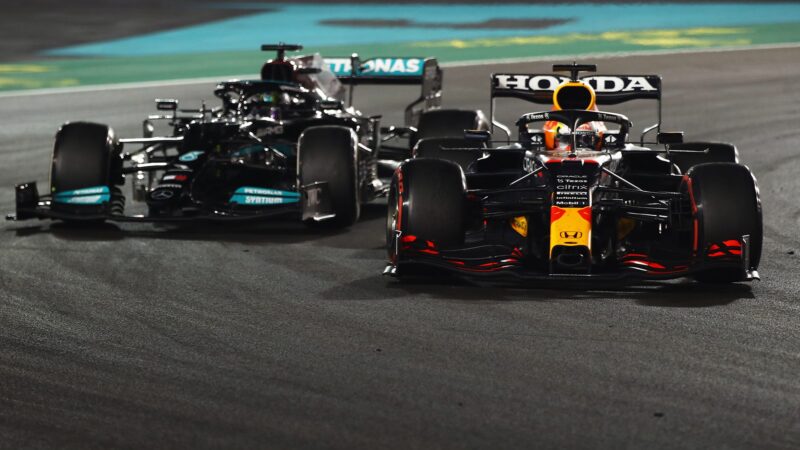
Soft tyres helped Verstappen snatch lead on the final lap
Joe Portlock/F1 via Getty Images
Initially teams were told that lapped cars would not be able to to unlap themselves, which would leave five lapped cars between Verstappen and Hamilton. It prompted Red Bull team principal Christian Horner to jump on the radio to Masi.
“Why aren’t we getting these lapped cars out of the way?” asked Horner. Masi responded that he was more concerned with clearing Latifi’s car. “We only need one racing lap,” said Horner.
Red Bull’s sporting director, Jonathan Wheatley then radioed to Masi: “Those lapped cars, you don’t need to let them go right the way around and catch up with the back of the pack,” he said. “You only need to let them go, and then we’ve got a motor race on our hands.”
“Understood,” Masi replied and he went on to take the course of action that Red Bull requested: a sequence that would later ignite suspicions that the result had deliberately been fixed in favour of Verstappen.
